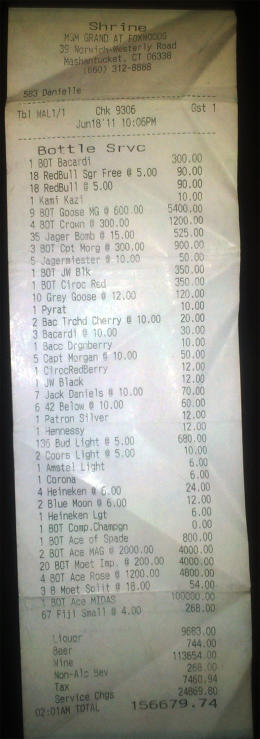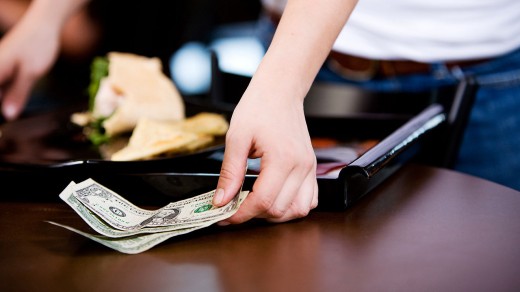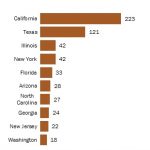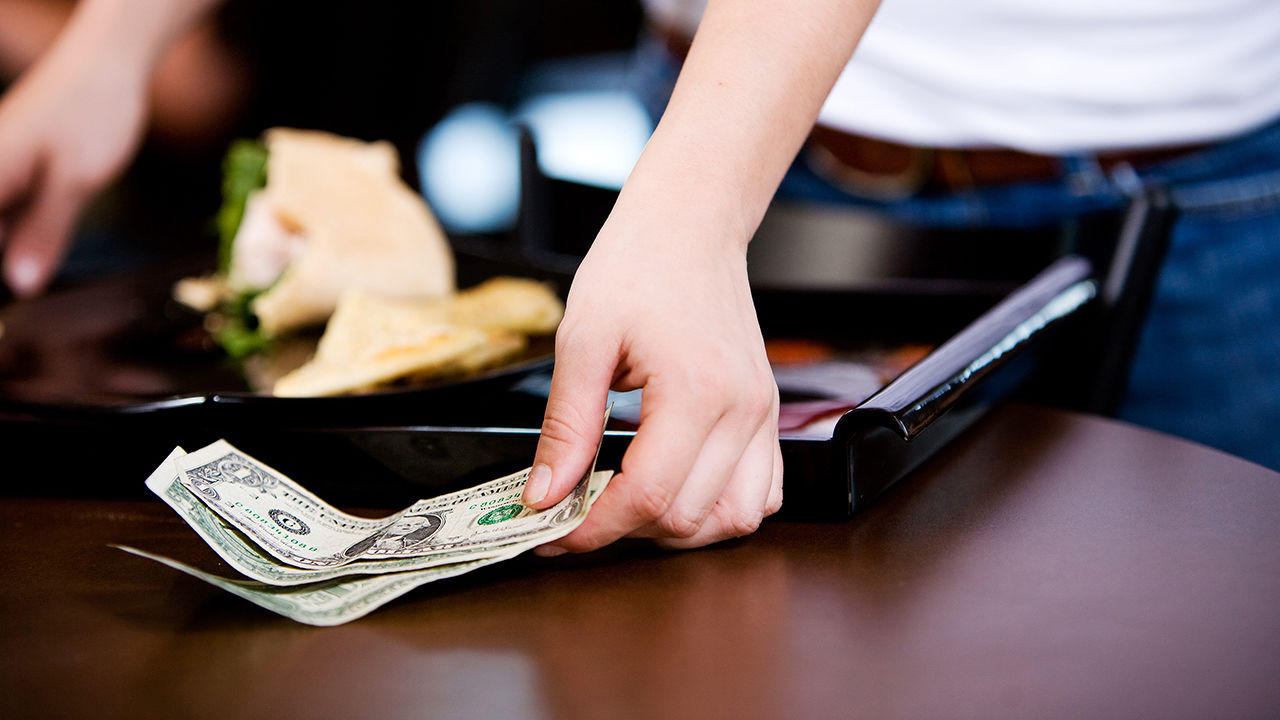professional Tip: Ban Tipping
The customized is confusing to buyers, creates instability for workers, and ironically doesn’t necessarily result in higher provider.
February 23, 2015
Tipping is standard throughout North america. The situation where the most of the people tip is in restaurants and bars, but the follow is an increasing number of fashionable in other walks of life where a carrier is supplied. folks tip taxicab drivers, hair dressers, and lodge doormen. Baristas boast a tip jar, and fee screens at more and more establishments urged customers to provide a little extra for his or her provider—on occasion 30% or better.
The rising record of places where customers are expected to go away a tip is adding to the confusion already endemic to the custom. It poses puzzling questions for purchasers, adds instability to employee income and, paradoxically, leads to worse provider at companies.
That’s why we must believe disposing of the tip.
What’s A “usual” Tip?
the problem for a lot of buyers is that tipping is confusing because the ideas should not clear and payments are arbitrary. many individuals agree the “standard” tip is 15%, though increasingly customers are “asked” to provide far more. then again, on what amount do you tip 15%? Is it the full bill? Is it the entire invoice excluding tax? Is it the whole meals bill, with pricey bottles of wine tipped at a separate charge?
many people agree the tip rate for big teams must continuously be better, but how many individuals comprise a “huge” group? most importantly, tipping way doing math, which is a tricky task for some people and more challenging after consuming a number of pints of beer or glasses of wine.
Unpredictable revenue
while tipping is confusing and troublesome for customers, it’s also challenging for the workers being tipped. workers in other occupations be aware of their pay rate prior to beginning work. Waiters, waitresses, and bartenders, alternatively, incessantly do not know how much they’re going to earn from a day’s labor.

every so often, servers hit the jackpot and decide up a large tip. A server at an evening membership in Connecticut bought nearly $25,000 from a single tip for just a few hours of work when a sports staff purchased a giant bottle of champagne (and was forced to pay an automated 20% for the carrier). In January, Shane Smith, chief executive of the Vice Media staff, spent $300,000 for a dinner on the Bellagio’s prime Steakhouse in Las Vegas. All restaurants in the Bellagio hotel have a uniform tipping policy, where “All events of twelve (12) or extra and/or personal dining occasions are topic to a 20% provider charge,” because of this a tip of over $50,000 for the lucky waiter/waitress who served Mr. Smith and his party their meal.
A more well-liked expertise, then again, is for servers to accept little or no tip when buyers are offended about their dining experience or when foreign visitors, acquainted with no tipping ideas back home, are served.
Restaurant Economics ended in Tipping
One purpose tipping began used to be on account of the industrial nature of eating places and bars, which are unique excessive-possibility and high-reward companies. Most, in truth, fail. truthful Issac, which invented the FICO credit rating, checked out failure rates amongst 89 industries and ranked restaurants and bars among the many 10 riskiest, whereas Small trade Administration data express best about half of of all eating places and lodges continue to exist greater than six years.
once they survive, restaurants frequently have very high gross revenue margins, the best possible in all the retail class. There are fairly few different businesses where just a few bucks of elements can also be transformed using talent, data, time, and energy into superb and pricey products. for example, the opposite day my server sure me to buy—for “only $5.99″—a ravishing slice of chocolate cake for dessert. That slice price around twenty-5 cents to make, resulting in an exceedingly high markup.
The industry, however, is very high risk as well. due to the fact, consuming out is a discretionary and rather dear job that can be executed at a less expensive price at residence, one of the vital first issues folks in the reduction of on when an economy slumps is eating out.
furthermore, there are few limitations to entry within the restaurant trade given that opening an eatery takes no different stage or required training. someone with an concept and a keenness to cook can set up shop. this implies extremely a hit eating places steadily to find competitors opening up fast neighborhood to steal away shoppers and earnings.
to cut back these risks, the restaurant trade managed to persuade shoppers that they’re answerable for both evaluating and paying the wages of their serving workforce. That reduces the businesses’ direct labor prices, lowering the danger of them failing.
So tips, as an alternative of appearing as an incentive, simply shift the burden of paying employees from the trade owner to the customer. This shifting has turn into enshrined in labor regulation. as an example, federal minimum wage rules allow servers to be paid just $2.13 per hour as long as the rest is made up in pointers, making sure the extra consumers tip, the less restaurant house owners need to pay.
Tipping not Ensures “Promptitude”
And that disconnect between the tip and repair defeats the whole goal of the apply. The tip was historically a small token fee, designed to verify “promptitude”—or promptness.
nowadays’s pointers, on the other hand, should not an effective means of motivating servers because tips are given on the end of the meal, no longer at the beginning. it is laborious to motivate servers when they’ve no concept how massive an incentive payment they’ll receive.
This drawback is borne out by means of research that discovered “tipping was no longer significantly associated to servers’ or third-parties’ reviews of the service.” many people tip the same quantity whether the provider is good or dangerous.

the advantages Of getting rid of The Tip
what is some other choice instead of discretionary tipping? In some international locations comparable to Japan, there’s no tipping or provider cost in eating places. instead, servers are paid via the company and the fee of foods and drinks is adjusted to account for the additional labor costs.
shifting to a edition where labor prices are constructed into food and drinks costs has many benefits. First, it shifts risk away from employees via doing away with uncertainty and by way of offering extra balance in a server’s pay.
Fluctuating pay leads to eating places and bars essentially seeing applicants for server jobs who like, or are ready to tolerate, ever-altering compensation. Switching to a system of secure pay will lend a hand eating places via increasing the pool of attainable candidates to incorporate folks that want more income walk in the park.
second, building labor prices into menu prices reduces confusion, uncertainty and the need for diners to do math. casting off all of these enhances the eating and ingesting expertise, growing the need to eat out and certain boosting the average check measurement.
furthermore, offering servers with extra secure incomes will have to end in fewer servers quitting over pay considerations and issues. service high quality improves the longer waiters, waitresses, and bar tenders keep on the job, when you consider that these occupations are a long way more complicated than they first seem.
finally, given some of the pointers paid in cash aren’t declared on an individual’s taxes, shifting to a no-tipping edition raises executive revenues by way of reducing the underneath reporting of income.
so long as tipping is still part of our financial system, we mustn’t abandon the follow in my opinion, as many American carrier staff depend upon it. however that dependence is the problem. shifting far from a model of discretionary tipping to a edition the place labor prices are built into menu prices is probably going a win for servers, eating places, clients, and the government. removing tipping is a way for restaurants, diners and servers to have their cake and eat it too.
Jay L Zagorsky is a analysis Scientist in economics at Ohio State university and blogs at http://u.osu.edu/zagorsky.1/. A model of this article initially seemed on the dialog, which is operating an occasional series exploring the custom of tipping.
[image: Shutterstock
picture: Shutterstock
(156)














